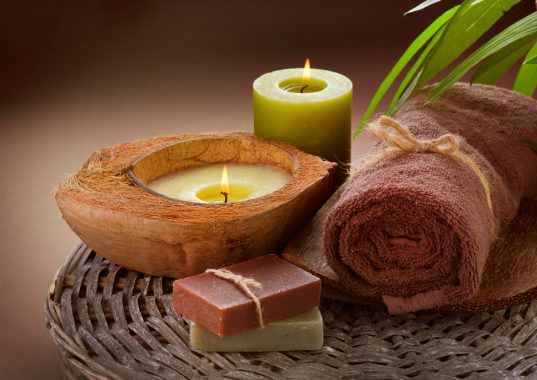Paraffin, stearin and beeswax candles
Candles can consist of paraffin, stearin, and beeswax. Paraffin and stearin are often mixed.
Most candles are made from hard paraffin, a substance that is a by-product of oil refining. Paraffin melts at around 55 degrees Celsius.
Candles are made from stearin, which is predominantly obtained from vegetable raw materials such as palm oil, much less frequently. It only melts at around 65 degrees and is less elastic than paraffin. Although stearin is considered a renewable raw material, environmentalists view it critically. In order to cultivate the common raw material palm oil, large areas of primeval forest are being cleared in Southeast Asia.
Beeswax candles must not contain any additives. The natural raw material is only available to a limited extent, so beeswax suppliers, beeswax candles are usually more expensive than candles made from paraffin or stearin.
Vegetable wax candles based on rapeseed, sunflower or soybean oil are considered a vegan and sustainable alternative. However, you should pay attention to the growing conditions and buy candles made from local organic raw materials if possible.
Additions in colored candles and scented candles
Colored candles: candles made of paraffin or stearin are initially white. In order to produce colored scented candles, fat-soluble color pigments are added to the raw material.
Soaked candles: An inexpensive alternative is to dip white candles in a mixture of Wax melts and color pigments to wrap them in a colorful coat.
The best way to burn uncolored candles is because dyes can clog the wick and adversely affect the burning behavior. Paraffin and stearin burn largely odorless. Special scented candles are added to scents of different flavors and intensities.
Pollutants: Avoid smoke and soot
Burning candles removes oxygen from the room air and causes pollutants. According to consumer advocates, the amounts are very small, regardless of the fuel. If the candle begins to flicker or soot, the exposure to fine dust increases significantly. Therefore, candles should not be left in drafts or burn with a wick that is too long. If the flame burns far into the wax, it does not get enough oxygen and more pollutants are formed. Press the wick into the liquid wax to extinguish it, because this way there is no smoke. If candles have been burning in a room for a long time, then ventilation should be good.
What matters with the wick?
The wick of a candle usually consists of braided cotton threads. The thicker the candle, the thicker the wick. The wick pulls up liquid wax, which burns. In the middle of the flame, however, the temperature is lower than at the edge. It is therefore important that the wick curves around a quarter circle and reaches into the hotter zone of the fire. There the tip of the wick comes into contact with oxygen, glows, and gradually burns off.
Recognize the quality of candles
The quality of candles is difficult to assess before buying. This can be a quality mark. Products marked with this have been tested with a view to high-quality raw materials and low-smoke and drip-free burning.
